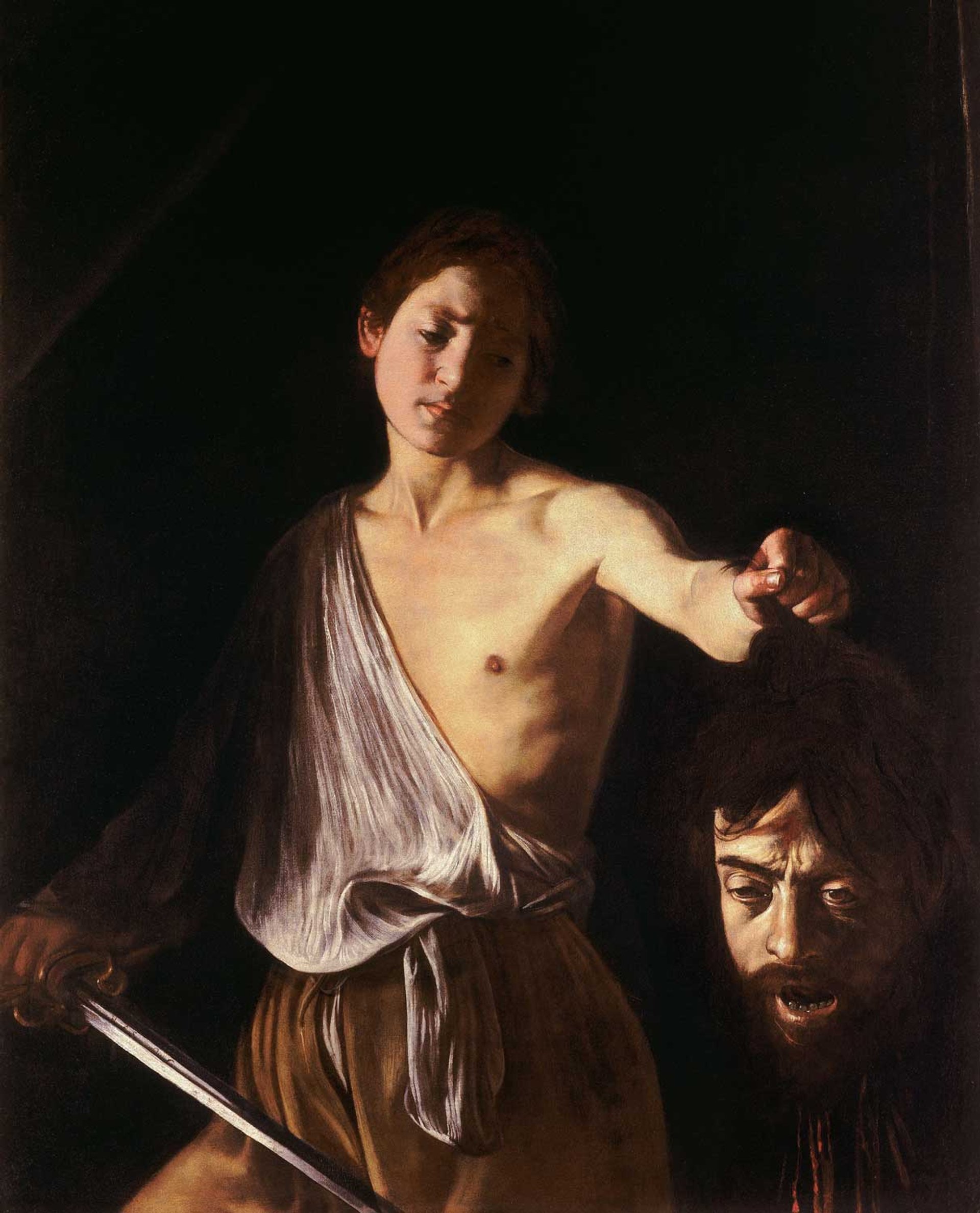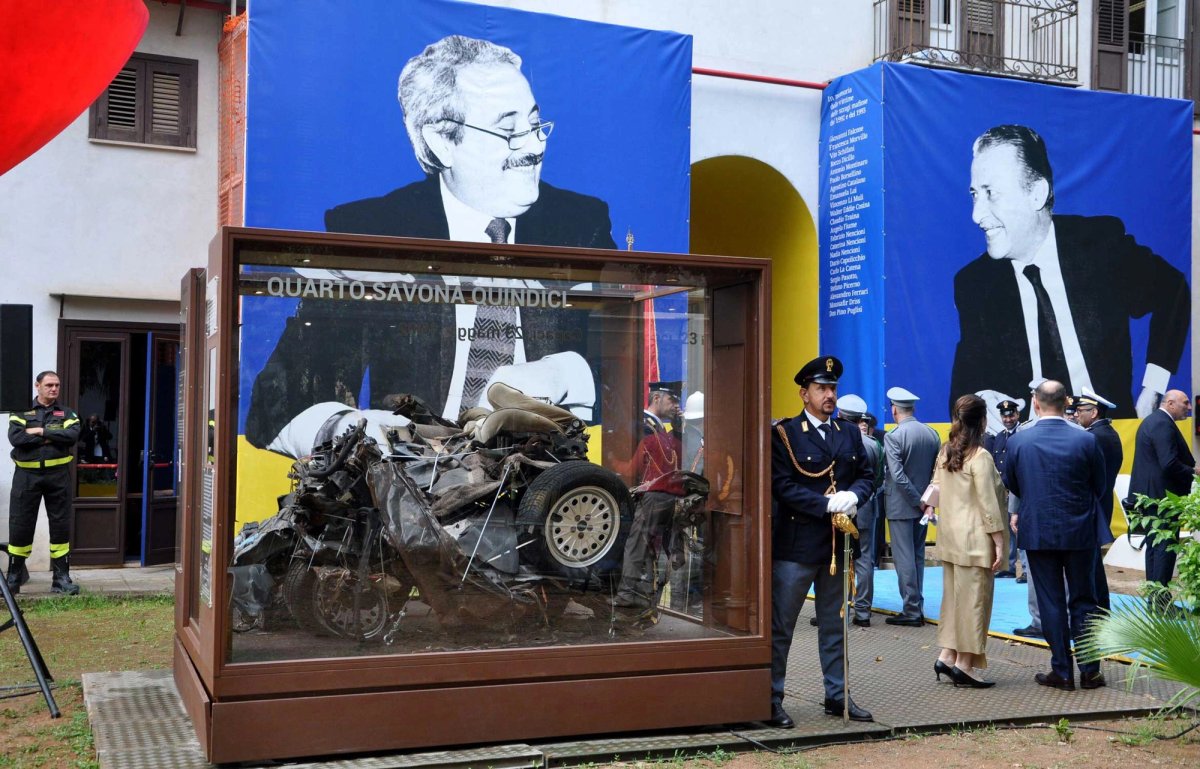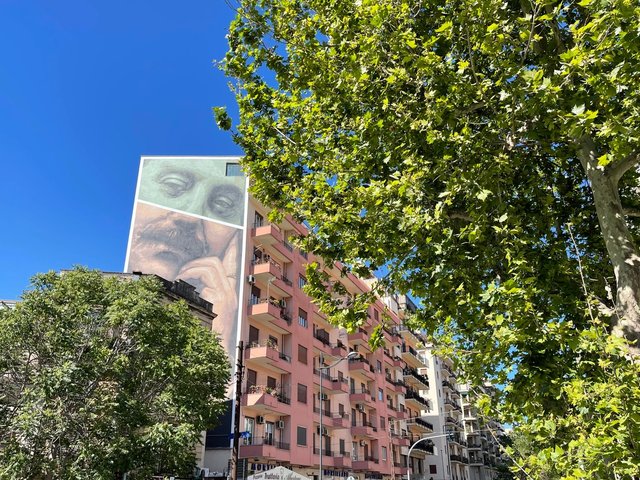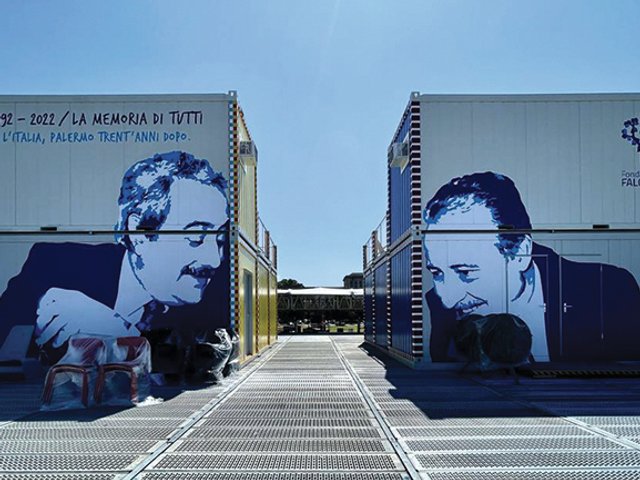Sicily has inaugurated a new museum dedicated to civic resistance against organised crime, marking 33 years since the assassination of the anti-Mafia judge Giovanni Falcone. The Museum of the Present, which opened on 23 May inside the historic Palazzo Jung in Palermo, commemorates Mafia victims while confronting the ongoing threat posed by Cosa Nostra.
The opening ceremony in the Sicilian capital was attended by Italy’s interior, justice and culture ministers, along with the presidents of the Sicily region and the national anti-Mafia commission. The curator Alessandro de Lisi said 500 guests took part while 3,000 people had booked visits for the museum’s first week. Entry will remain free until 19 July, the anniversary of the murder of Falcone’s colleague and close friend Paolo Borsellino.
On 23 May 1992, Falcone was killed in a motorway bombing outside Palermo that shocked Italy and the world. Cosa Nostra operatives detonated 500kg of explosives beneath the A29 as Falcone’s convoy travelled from the airport. The blast killed him, his wife Francesca Morvillo and three police escorts. The Capaci massacre, as the attack is known, became a national trauma and a turning point in Italy’s fight against organised crime.
Horrified citizens poured into the streets, sparking a movement that led to a wave of arrests and trials. Yet, while Cosa Nostra’s grip weakened, it has not vanished. Last February, police arrested more than 180 suspected clan members in a single operation, exposing how the syndicate is regrouping with a new, tech-savvy generation. De Lisi noted that, even today, the fight against the mafia is not over—a reality he said was reflected in the museum’s name. “You can’t create a museum of history if the phenomenon you are exploring still exists,” he said.
Multimedia installation
The museum occupies 3,000 sq. m in an 18th-century building that once belonged to feudal barons and was later sold to Swiss-Jewish merchants. Displays include personal items such as Falcone’s favourite pen—broken by the blast and later repaired—and his collection of model ducklings. Borsellino’s bicycle is suspended from the ceiling. Artefacts from the 1986-87 Maxi Trial—which led to the conviction of 338 Mafia members—including a photocopier used to duplicate thousands of court documents, are also on view.
A multimedia installation recreates the Capaci explosion through archive footage, audio recordings and a visceral reconstruction of the blast. The visit ends with a mirrored wall bearing the words: “Now it’s your turn.”
The museum’s core section spans over a century of Mafia violence and resistance, from the 1909 assassination in Palermo of the Italian American NYPD officer Joe Petrosino to the 2023 arrest—and death—of the Cosa Nostra boss Matteo Messina Denaro, who had spent three decades in hiding.
Even before its opening, the project attracted support. In May, it received a €20,000 grant from Italia Patria della Bellezza, a Milan-based foundation that funds overlooked cultural initiatives. De Lisi, who has collaborated extensively with the Falcone Foundation, previously curated a city-wide art project symbolising the Mafia’s impact on Palermo’s urban and moral fabric. He also gained national attention in 2015 for staging a major Caravaggio show in a Camorra-confiscated villa near Naples.

Curator Alessandro de Lisi hopes to bring Caravaggio’s David with the Head of Goliath to the new museum
Courtesy Galleria Borghese
His current ambition is to bring Caravaggio’s David with the Head of Goliath (1605) to the museum once the painting concludes its run at a Rome exhibition. “It would be a homage to Paolo Borsellino,” he said. “It symbolises the strength of the vulnerable to overcome fear.”




